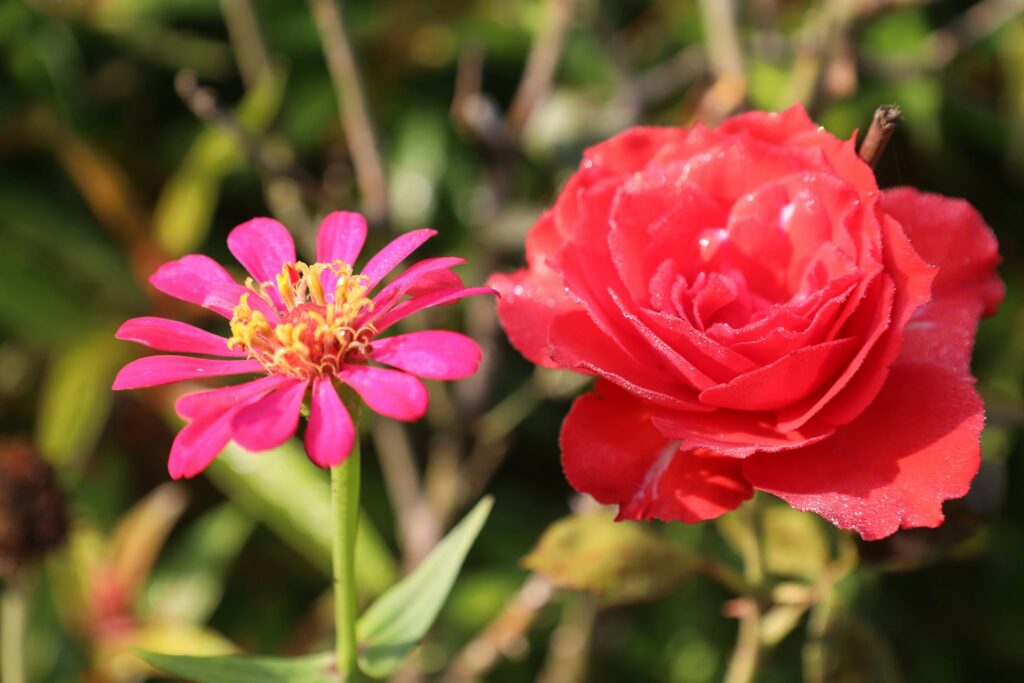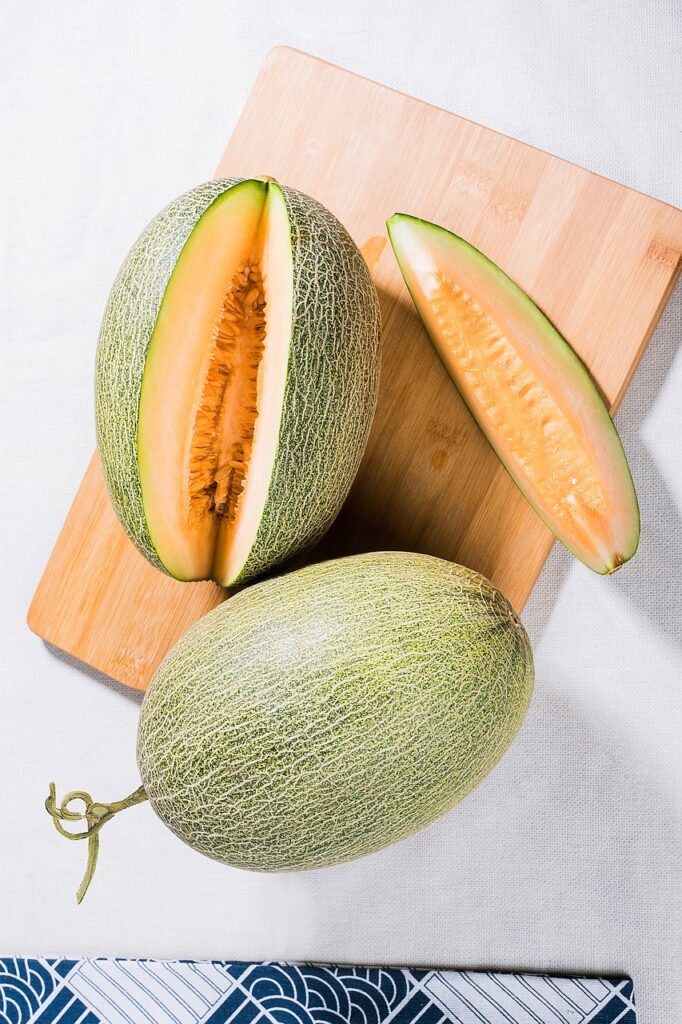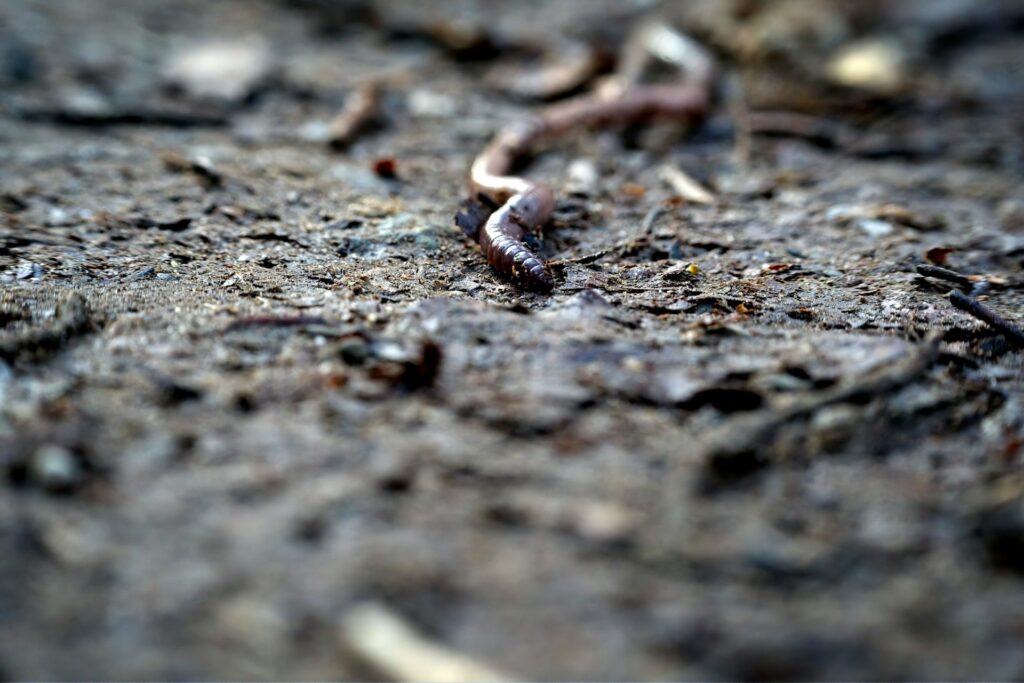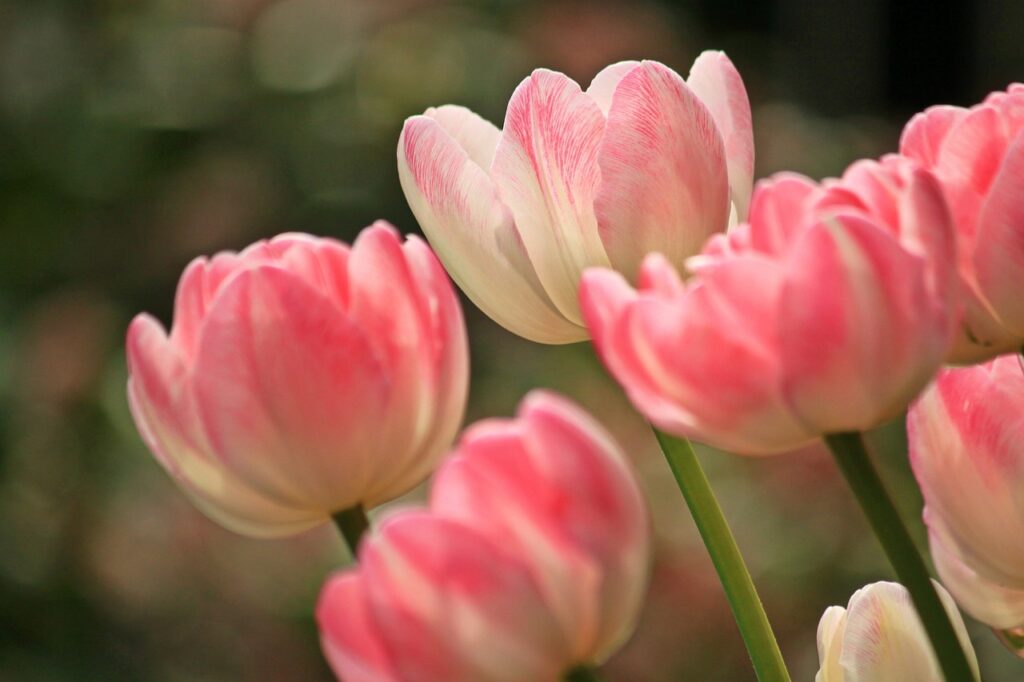
Potato plants are vital to agriculture and cuisine worldwide, known primarily for their edible tubers. The appearance of potato plants can vary somewhat depending on the variety, but they generally share common features. A typical potato plant has a bushy appearance, with several stems emerging from a single seed potato. The stems are leafy and can reach about 60 to 100 centimeters in height. The leaves of the potato plant are compound, featuring several leaflets grouped together; they are usually dark green in color. As the plant develops, it produces small white, pink, or purple flowers, which signal the growth of the tubers below the soil.
Under the soil, the most recognizable part of the plant develops: the potatoes themselves. These tubers are actually swollen portions of the underground stem, known as stolons, that serve as a storage organ for the plant. Potatoes can vary significantly in size, shape, and color, depending on the variety and growing conditions. The skin may be smooth or rough, and colors range from common browns and whites to reds, yellows, and even purples. These tubers hold the potential for various culinary uses, which have made them a staple food in many cultures.
Properly identifying and understanding the growth pattern of potato plants is essential for effective cultivation. The plant’s health and productivity are greatly influenced by the right conditions and care, including well-drained soil, adequate sunlight, and regular watering. Pest management and disease control are also significant aspects of potato plant maintenance. Ultimately, successful cultivation leads to the harvesting phase, where the mature potatoes are removed from the soil, ready for consumption or storage.
Key Takeaways
- Potato plants have bushy green foliage with compound leaves and may produce flowers.
- The tubers vary in size and color and are the well-known edible part of the plant.
- Growth success depends on proper cultivation, maintenance, and understanding the plant’s needs.
Understanding Potato Plant Anatomy
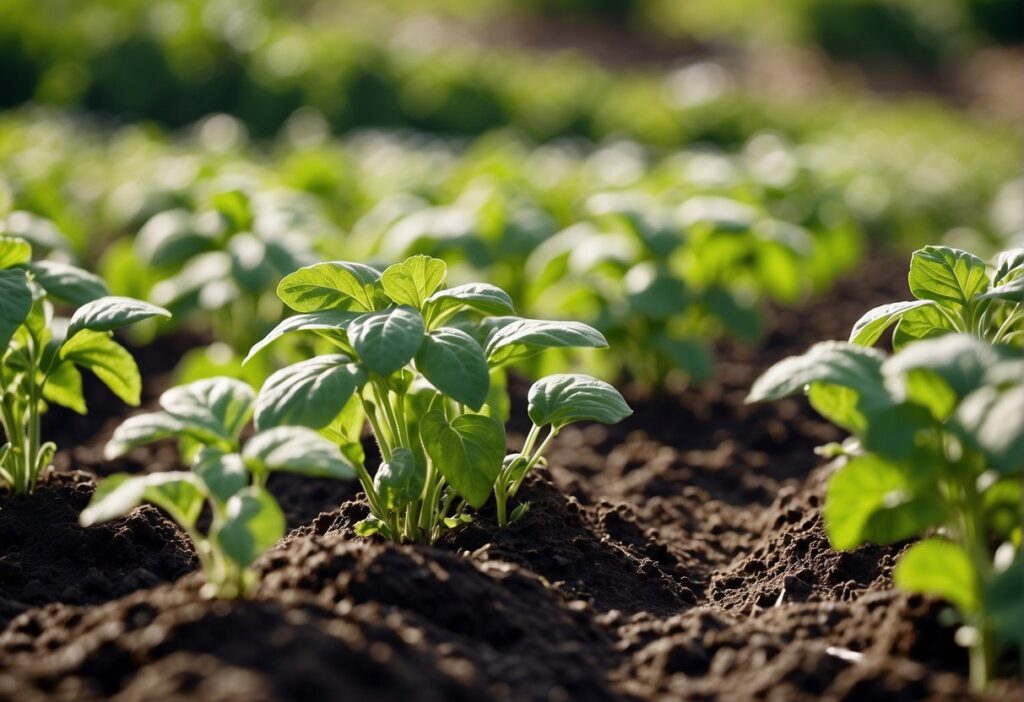
Potato plants (Solanum tuberosum) are herbaceous perennials in the nightshade family, known for their edible tubers. This section explores the specific anatomical features of the potato plant from its stems and foliage to its tubers, roots, flowers and fruits during various stages of its life cycle.
Stems and Foliage
The potato plant exhibits a stem that is crucial during early development. As herbaceous perennials, potato stems are not woody and hard but are green and flexible. The foliage consists of compound leaves with multiple leaflets, which are typically lance-shaped. This dense foliage can protect the tubers from sunlight, which is important as exposure can lead to greening of the tubers, making them potentially toxic.
| Features of Stems and Foliage | Description |
|---|---|
| Type of Plant | Herbaceous perennial |
| Leaf Composition | Compound leaves with leaflets |
| Shape of Leaflets | Lance-shaped |
Tubers and Roots
Potato plants develop from seed potatoes or potato seeds. Tubers are the most recognizable part of a potato plant, forming swollen underground stems with eyes facing upwards. They are the storage organs of the plant, accumulating starch to provide energy for the next growing season. The roots, meanwhile, are fibrous and serve to anchor the plant and absorb moisture and nutrients from the soil.
| Features of Tubers and Roots | Description |
|---|---|
| Edible Part | Tubers (swollen underground stems) |
| Function of Tubers | Store starch and energy for future growth |
| Root System | Fibrous, for absorbing nutrients and water |
Flowers and Fruits
When potato plants reach the flowering stage, they produce inconspicuous flowers which can range in color from white to pink and purple. Although not all varieties of potato plants will produce fruits, those that do bear small, green, tomato-like fruits containing the true seeds of the plant. These fruits should not be consumed as they are not edible and can be toxic.
| Features of Flowers and Fruits | Description |
|---|---|
| Flowering Stage Appearance | Inconspicuous flowers, colors vary |
| Fruit | Small, green, similar to tomatoes, contain seeds |
| Edibility of Fruit | Not edible, potentially toxic |
Growth Conditions and Planting Techniques
Successful cultivation of potato plants requires attention to soil quality, sunlight exposure, effective watering and nutrition practices, along with proper planting and hilling methods to maximize yield.
Soil and Sunlight Requirements
Potato plants thrive in well-drained soil with a pH between 5.0 and 7.0. They need full sunlight for at least six hours daily to develop optimally. Raised beds or hills ensure proper drainage and prevent tuber rot. For gardening, it’s recommended to enrich the soil with compost or aged manure before planting.
Watering and Nutrition
Regular watering is crucial for potatoes, especially during tuber formation. They need 1-2 inches of water per week, with careful attention to avoid overwatering which can lead to root diseases. Nutrient issues can arise, so a balanced fertilizer is important during planting and growth stages. Applying organic mulch can help retain moisture and regulate soil temperature.
Planting and Hilling Methods
Planting potatoes should begin when the soil is workable in early spring. Use seed potatoes, cutting them into chunks with one or two eyes per piece. Plant the chunks about 3 inches deep and 12 inches apart in rows spaced 36 inches apart. Hilling should occur when the plants are about 6 inches tall, by mounding soil around the base to cover the emerging stems, promoting growing potatoes and protecting against sunlight which can cause greening. New potatoes can be harvested early, while the main yield should be collected when foliage dies back.
- Gardening Tip: Utilize 4-inch early potatoes for a fast yield.
- Hilling Advice: Repeat every few weeks—engaged hilling ensures high-quality new potatoes.
Maintenance and Problem-Solving
Maintaining healthy potato plants requires vigilance to protect against a variety of pests and diseases. Effective strategies can help ensure that tubers develop properly, and plants remain vigorous throughout the growing season.
Protecting Against Pests and Diseases
Pests such as Colorado potato beetles, aphids, and other insects can cause significant damage to potato plants. Regular monitoring helps to identify pests early. When pests are detected, one can use physical removal, insecticidal soaps, or appropriate pesticides to control the infestation. Implementing crop rotation and sanitation practices may also prevent pest populations from becoming established.
Table 1: Common Potato Pests and Control Strategies
| Pest | Control Strategy |
|---|---|
| Aphids | Insecticidal soaps, neem oil, release of beneficial insects like ladybugs |
| Colorado Potato Beetle | Handpicking, use of Spinosad or Bacillus thuringiensis var. tenebrionis |
| Other Insects | Crop rotation, floating row covers, organic or synthetic pesticides |
Diseases in potatoes, such as early blight and potato blight, can be deterred by selecting resistant cultivars and practicing crop rotation. During the flowering stage and as tubers are ripening, it’s crucial to maintain dry foliage to reduce the spread of fungal diseases. If blight is suspected, treatments with fungicides that contain chlorothalonil or copper may be necessary. Proper storage—in a cool, dry, and dark environment—helps prevent disease after harvest.
List of Tips for Disease Prevention:
- Ensure proper spacing between plants for air circulation.
- Water at the base to keep foliage dry.
- Remove and destroy infected plants immediately.
- Utilize resistant varieties when available.
- Rotate crops to different areas each year.
Side-shoots or stolons bear the actual tubers underground. Keeping these stolons free from pests and diseases is as vital as protecting the foliage above. Careful monitoring and soil health maintenance minimize the issues that could affect stolon and tuber development.
Harvesting and Utilization
Successful potato harvesting involves understanding the optimal time for harvest and the suitable utilization of different potato varieties. Each variety presents unique characteristics in texture, skin, and flesh colors that affect their optimal use in cooking and food preparation.
When and How to Harvest
Potatoes are usually ready to harvest when the foliage begins to yellow and die back. Timing is crucial as it affects the tuber’s skin thickness and, therefore, the storage capability. For new potatoes, harvest can take place two to three weeks after the plants stop flowering. For mature potatoes, it’s best to wait 2-4 weeks after the foliage has died back, allowing the skin to thicken and reduce the risk of bruising during harvest.
To harvest, one should use a spade or fork to gently lift the tubers from the soil, being careful not to bruise or cut them. It is essential to handle them gently since cuts and bruises can affect storage life and quality. Once harvested, potatoes should be cured in a dry, shaded area for one to two weeks to further harden the skin, especially if they are meant for long-term storage.
Potato Varieties and Their Uses
Potato varieties are numerous and can be categorized by their texture, which is often linked to their starch content. For example, waxy potatoes like red potatoes possess more moisture, a firmer texture, and retain their shape after cooking, making them perfect for salads and boiling. In contrast, starchy potatoes like Russets have a dry, floury texture, excellent for baking and making fluffy mashed potatoes or crispy french fries.
Here’s a brief list of common potato varieties and their best culinary uses:
- Red Potatoes: Best for salads, boiling, and grilling due to their waxy texture and ability to hold shape.
- Yukon Golds: A versatile potato with a buttery flesh color that’s ideal for mashing, roasting, or baking.
- Fingerling Potatoes: Small, waxy, and flavorful, perfect for roasting or adding to salads.
- Russets: High starch content makes them ideal for baking, frying, and making mashed potatoes.
Potatoes are not only versatile in the kitchen but also offer nutritional value. They are a good source of potassium and vitamin C, with the content varying slightly among the different varieties. The flesh colors, which can range from white to yellow and even purple, do not significantly affect the nutritional content.
For storage, potatoes should be kept in a dark, cool, and well-ventilated space to maintain their texture and flavor while preventing sprouting. Proper storage techniques can extend the shelf life of potatoes for several months, depending on the variety and conditions.

